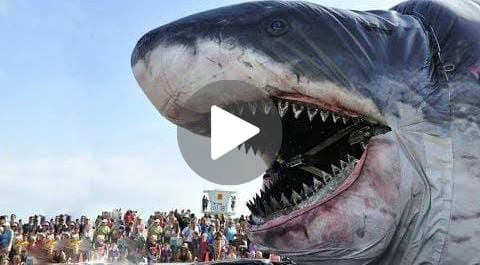In the vast expanse of our oceans, discoveries continue to astound us, with each unveiling shedding light on the mysteries of the deep. One such recent revelation has sent ripples of excitement through the scientific community and beyond. A colossal find has been made—the biggest fish in the world has been found alive, soaring to the zenith of marine marvels.
What Makes a Fish the “Biggest”?
When we speak of the “biggest” fish, we delve beyond mere size. It encompasses a combination of factors, including length, weight, and overall mass. Among the contenders for this prestigious title are the gentle giants of the sea—whale sharks, basking sharks, and the elusive ocean sunfish, also known as Mola.
The Characteristics of the World’s Largest Fish
These majestic creatures possess awe-inspiring dimensions, often reaching lengths surpassing a double-decker bus and weighing as much as several cars combined. Their immense size belies a serene nature, as they gracefully navigate the ocean depths, filtering vast quantities of water for sustenance.
Where Was It Found?
The recent discovery was made in the azure waters of the Pacific Ocean, off the coast of a remote island chain. Surrounded by pristine coral reefs and teeming with marine life, this idyllic locale serves as a sanctuary for numerous species, including the reigning giant of the seas.
Impact on Marine Biology
The revelation of the world’s largest fish alive holds profound implications for marine biology. It offers a rare opportunity to study these enigmatic creatures in their natural habitat, unravelling the mysteries of their behaviour, migration patterns, and ecological roles.
Implications for Conservation Efforts
Moreover, this discovery underscores the importance of conservation efforts aimed at safeguarding fragile marine ecosystems. As apex predators, these colossal fish play a pivotal role in maintaining the delicate balance of the oceanic food web. Their protection is not only vital for biodiversity but also essential for the health of our planet.
Challenges in Studying Large Marine Species
Yet, studying these oceanic behemoths presents formidable challenges. Their vast range and elusive nature make tracking and observation a daunting task for researchers. Furthermore, increasing anthropogenic pressures, such as overfishing and habitat degradation, pose significant threats to their survival.
Conservation Concerns
Efforts to conserve these magnificent creatures must address these pressing concerns, emphasizing habitat protection, sustainable fishing practices, and international cooperation.
Public Reaction and Excitement
The news of the discovery has sparked widespread fascination and excitement, captivating the imagination of people around the globe. Social media platforms are abuzz with awe-inspiring images and videos, offering glimpses into the world of these majestic giants.
What Does This Mean for Future Research?
Looking ahead, this momentous discovery paves the way for future research endeavours, fostering collaboration among scientists, conservationists, and policymakers. By harnessing cutting-edge technologies and innovative approaches, we can unlock the secrets of the deep and ensure the continued survival of these magnificent creatures.
Potential Threats to the Species
However, the journey ahead is fraught with challenges. Anthropogenic activities continue to pose significant threats to the world’s largest fish, ranging from habitat destruction to accidental bycatch. Urgent action is needed to address these pressing issues and secure a brighter future for these iconic species.
Conservation Efforts Needed
To mitigate these threats, concerted conservation efforts are imperative. This entails establishing marine protected areas, implementing fisheries management measures, and raising awareness about the importance of preserving our oceans.
Protecting Their Habitat
Central to these efforts is the protection of critical habitats, such as breeding grounds and feeding areas, where these magnificent creatures congregate in large numbers. By safeguarding these vital areas, we can ensure the long-term survival of the world’s largest fish.
Awareness Campaigns
Furthermore, education and outreach initiatives are essential for fostering a deeper appreciation for marine biodiversity and galvanizing public support for conservation efforts. By empowering individuals to become stewards of the ocean, we can effect meaningful change and safeguard our planet for future generations.
Collaborative Research Efforts
In the spirit of collaboration, scientists from around the world are joining forces to study and protect these majestic creatures. By sharing knowledge, resources, and expertise, we can overcome the challenges ahead and secure a sustainable future for our oceans.
Educating the Public About Giant Fish
Ultimately, the discovery of the world’s largest fish serves as a poignant reminder of the wonders that lie beneath the surface of our oceans. By sharing these stories and experiences, we can inspire a new generation of ocean advocates and ignite a global movement to protect our marine heritage.
Conclusion
In conclusion, the discovery of the biggest fish in the world alive is a testament to the boundless wonders of our oceans. It underscores the importance of conservation efforts and collaborative research in safeguarding marine biodiversity. By working together, we can ensure that these majestic creatures continue to roam the seas for generations to come.
